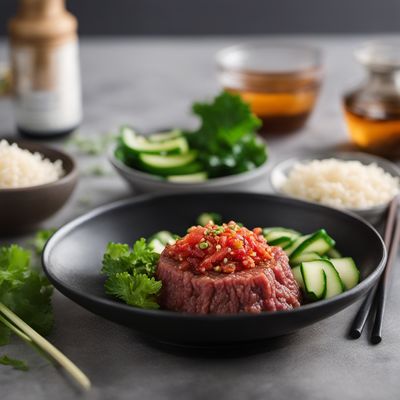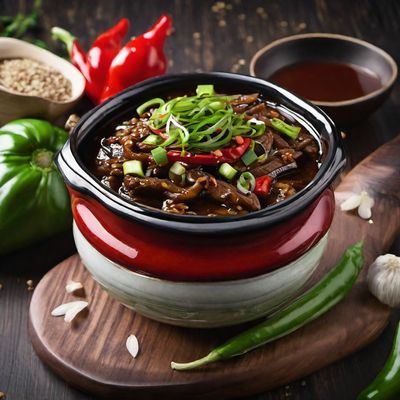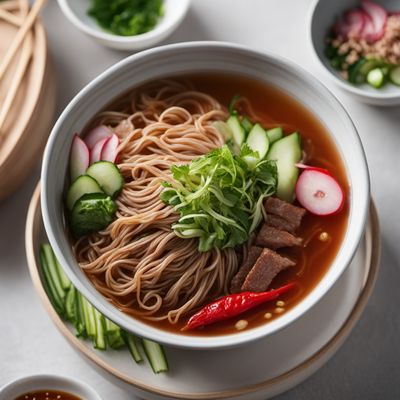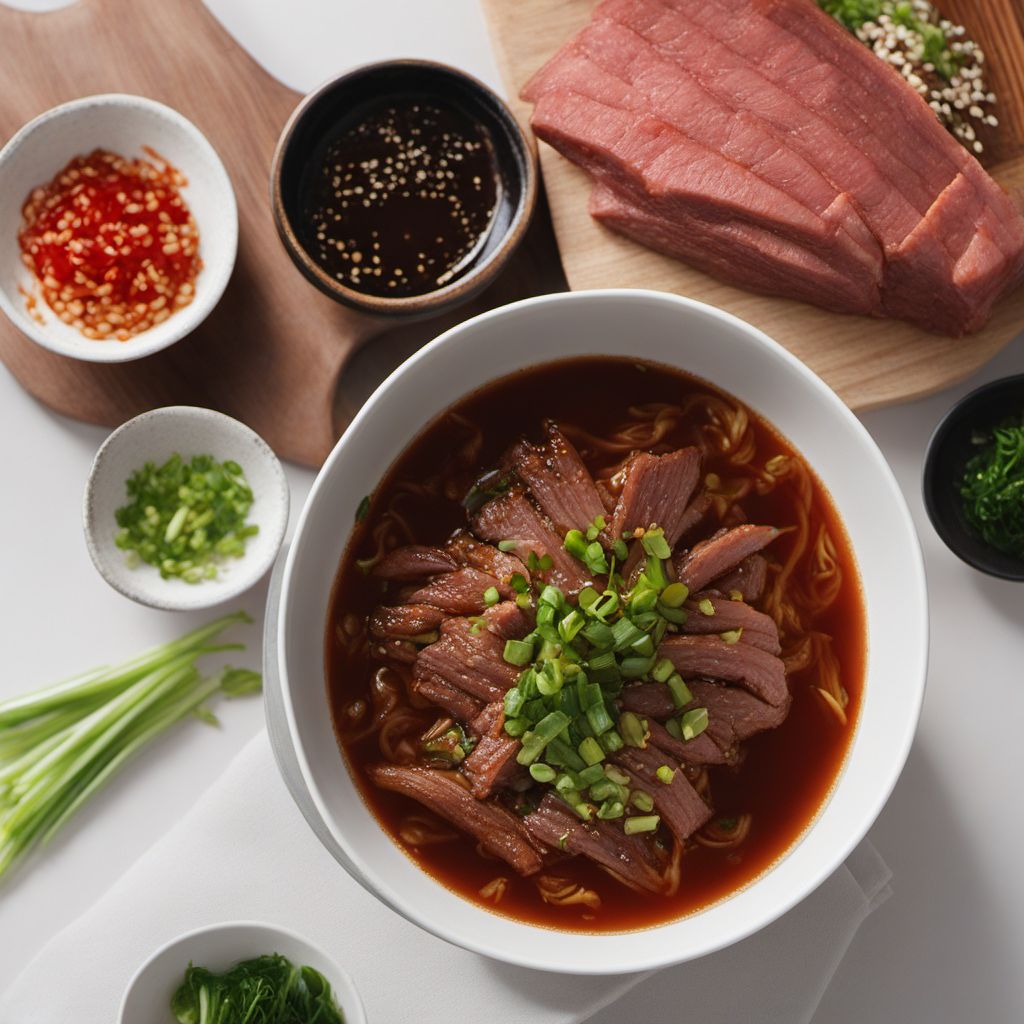
Recipe
Kongnamul Gukbap with Spicy Beef Broth
Savory and Spicy Kongnamul Gukbap: A Korean Delight
4.7 out of 5
Kongnamul Gukbap is a traditional Korean dish that combines the freshness of soybean sprouts with a flavorful beef broth. This hearty soup is a staple in Korean cuisine, known for its comforting taste and nourishing qualities.
Metadata
Preparation time
20 minutes
Cooking time
20 minutes
Total time
40 minutes
Yields
4 servings
Preparation difficulty
Easy
Suitable for
Gluten-free, Dairy-free, Low-carb, High-protein, Nut-free
Allergens
Soy, Sesame
Not suitable for
Vegan, Vegetarian, Paleo, Keto, Halal
Ingredients
-
500g (1.1 lb) beef brisket, thinly sliced 500g (1.1 lb) beef brisket, thinly sliced
-
4 cups (950ml) beef broth 4 cups (950ml) beef broth
-
2 cups (470ml) water 2 cups (470ml) water
-
2 cups (300g) soybean sprouts 2 cups (300g) soybean sprouts
-
4 cloves garlic, minced 4 cloves garlic, minced
-
2 tablespoons soy sauce 2 tablespoons soy sauce
-
1 tablespoon gochujang (Korean chili paste) 1 tablespoon gochujang (Korean chili paste)
-
1 tablespoon sesame oil 1 tablespoon sesame oil
-
1 teaspoon sugar 1 teaspoon sugar
-
Salt and pepper to taste Salt and pepper to taste
-
4 green onions, thinly sliced 4 green onions, thinly sliced
-
Cooked rice, for serving Cooked rice, for serving
Nutrition
- Calories (kcal / KJ): 350 kcal / 1465 KJ
- Fat (total, saturated): 12g, 4g
- Carbohydrates (total, sugars): 15g, 3g
- Protein: 45g
- Fiber: 5g
- Salt: 2g
Preparation
-
1.In a large pot, bring the beef broth and water to a boil.
-
2.Add the beef brisket slices to the boiling broth and cook for 5 minutes, or until the beef is cooked through.
-
3.Remove the beef from the broth and set aside.
-
4.In the same pot, add the minced garlic, soy sauce, gochujang, sesame oil, sugar, salt, and pepper. Stir well to combine.
-
5.Add the soybean sprouts to the pot and cook for 3-4 minutes, until they are slightly tender.
-
6.Return the cooked beef to the pot and simmer for an additional 5 minutes to allow the flavors to meld together.
-
7.Taste and adjust the seasoning if needed.
-
8.Serve the Kongnamul Gukbap hot, garnished with green onions, and accompanied by cooked rice.
Treat your ingredients with care...
- Soybean sprouts — Make sure to blanch the soybean sprouts for just a few minutes to retain their crunchiness. Overcooking them will result in a mushy texture.
- Gochujang — Adjust the amount of gochujang according to your spice preference. Add more for a spicier broth or reduce the amount for a milder flavor.
Tips & Tricks
- For a richer broth, you can simmer the beef bones along with the beef brisket slices.
- If you prefer a vegetarian version, you can substitute the beef broth with vegetable broth and omit the beef brisket.
- Feel free to add other vegetables such as mushrooms or spinach to enhance the nutritional value of the dish.
- Serve the Kongnamul Gukbap with a side of kimchi for an extra burst of flavor.
- Leftovers can be stored in the refrigerator for up to 3 days. Reheat gently on the stovetop before serving.
Serving advice
Serve the Kongnamul Gukbap in individual bowls, making sure to include a generous amount of beef, soybean sprouts, and broth in each serving. Accompany the soup with a bowl of steamed rice on the side.
Presentation advice
To enhance the presentation of the Kongnamul Gukbap, garnish each bowl with a sprinkle of sesame seeds and a drizzle of sesame oil. The vibrant green color of the soybean sprouts and the rich brown broth will create an appetizing visual appeal.
More recipes...
For Kongnamul gukbap
More Korean cuisine dishes » Browse all
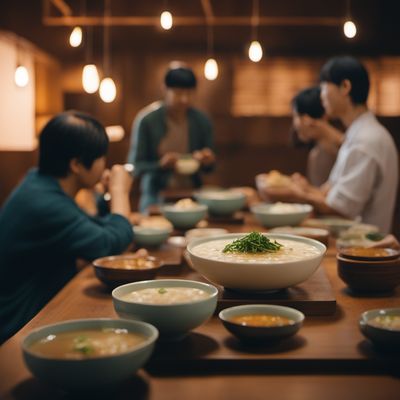
Tteokguk
Rice cake soup
Tteokguk is a traditional Korean soup that is often served during the Lunar New Year. It is a simple and comforting soup made with beef broth and...

Jjapaguri
Jjapaguri is a Korean noodle dish that is typically served as a lunch or dinner dish. The dish is made with two types of instant noodles,...

Goguma mattang
Candied Sweet Potatoes
Goguma mattang is a traditional Korean dish that is made by caramelizing sweet potatoes. This dish is popular in Korea and is often served as a...

